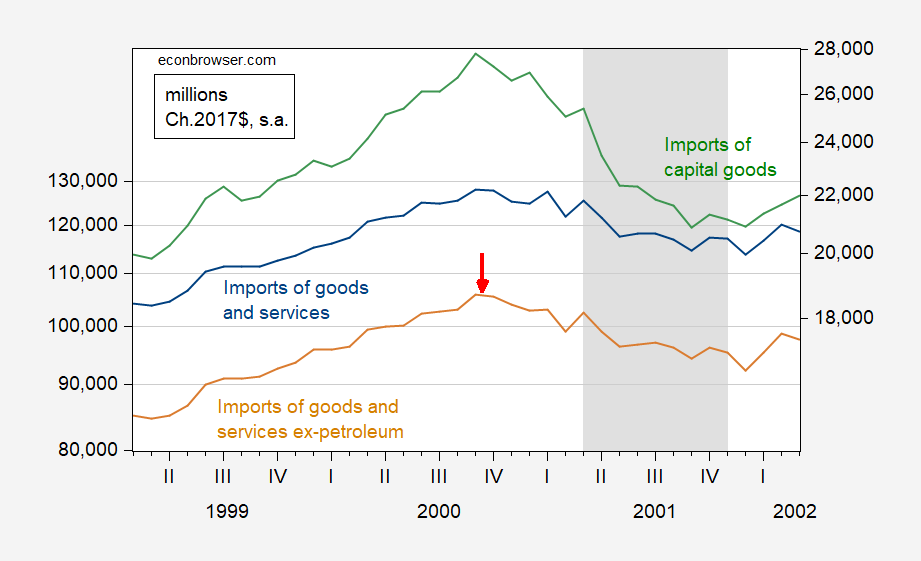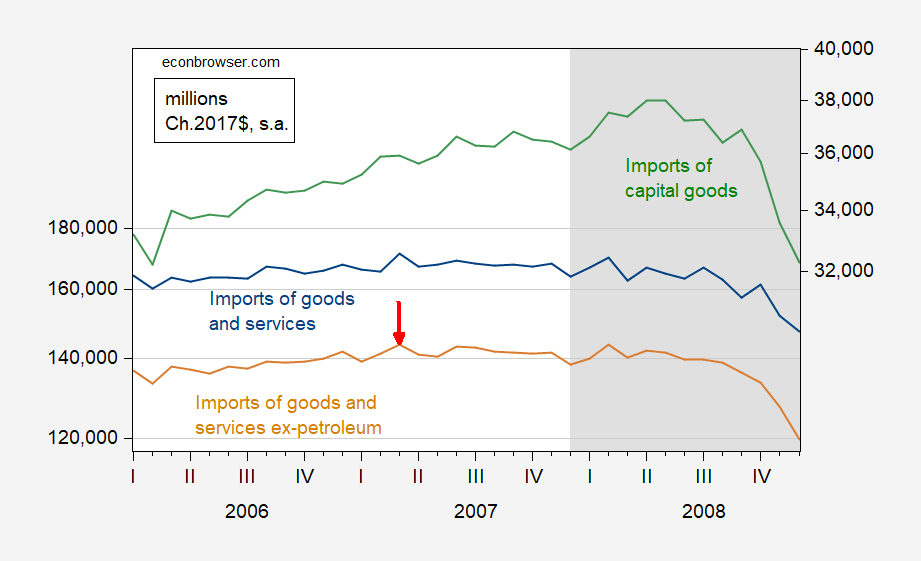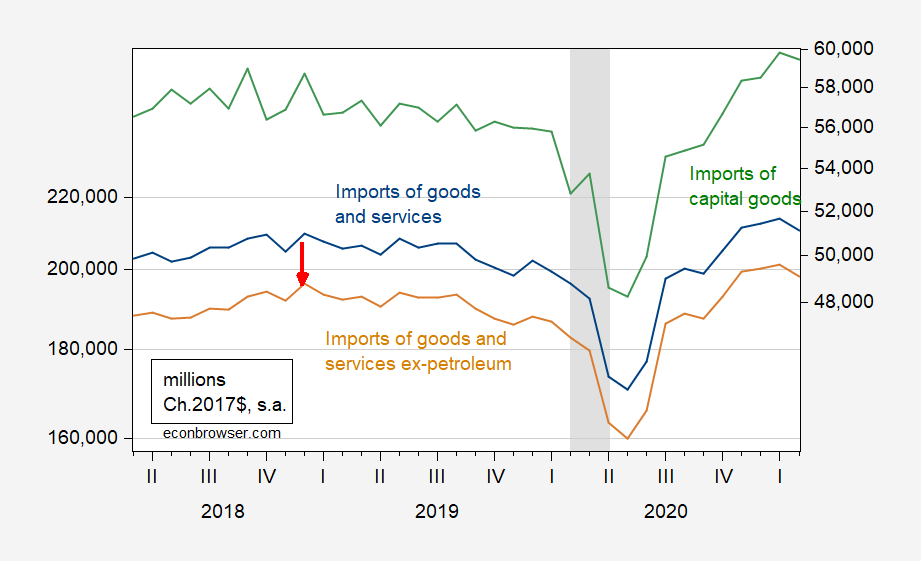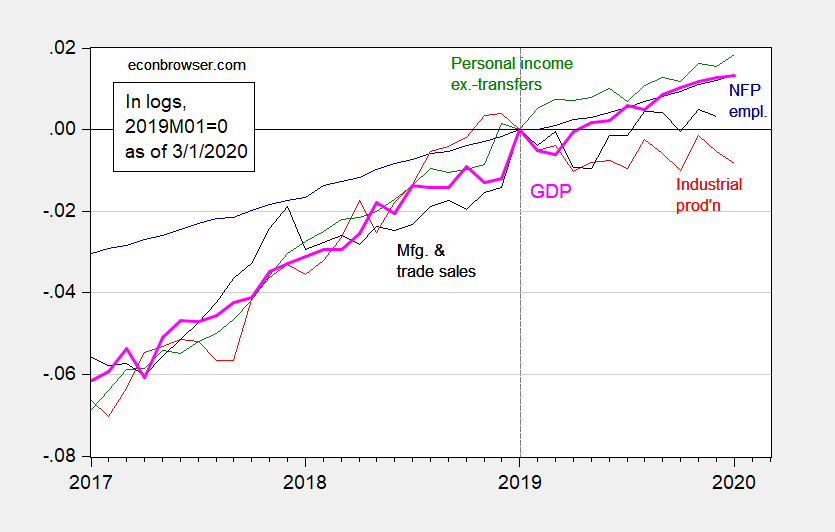[ad_1]
Reply: Sure, and (to a lesser extent) Sure.
Take into account the present scenario.
Determine 1: Imports of products and companies (blue), imports of products and companies ex-petroleum (tan), imports of capital items (inexperienced, proper scale), all in miilions of Ch.2017$. Supply: BEA.
Actual imports of products and companies excluding petroleum peaked in March of 2022. They, and whole imports, stay beneath these ranges. Capital items imports — which ought to mirror extra ahead wanting habits — peaked in September of 2022.
Actual imports did peak earlier than the recession of 2001.
Determine 2: Imports of products and companies (blue), imports of products and companies ex-petroleum (tan), imports of capital items (inexperienced, proper scale), all in miilions of Ch.2017$. NBER outlined peak-to-trough recession dates shaded grey. Supply: BEA, NBER.
Then again, whereas imports ex-petroleum peaked in March 2007 (truly technically peaked barely increased in February 2008), capital items peaked in April of 2008, months into the recession as outlined by NBER.
Determine 3: Imports of products and companies (blue), imports of products and companies ex-petroleum (tan), imports of capital items (inexperienced, proper scale), all in miilions of Ch.2017$. NBER outlined peak-to-trough recession dates shaded grey. Supply: BEA, NBER.
Lastly, within the final recession, imports ex-petroleum peaked in December of 2018. And capital items imports truly peaked in September of that yr.
Determine 4: Imports of products and companies (blue), imports of products and companies ex-petroleum (tan), imports of capital items (inexperienced, proper scale), all in miilions of Ch.2017$. NBER outlined peak-to-trough recession dates shaded grey. Supply: BEA, NBER.
Therefore, combination actual imports are sometimes a comparatively dependable precursor of recessions (subcategories like capital items will not be essentially so), not less than for the final three recessions. What about false positives — i.e., instances the place imports fell however no recession occurred. One needs to contemplate instances the place an prolonged interval of flat or declining imports occurred, like half a yr. On fast inspection, it appears like there’s just one such case — March 2015, when it took a subsequent 2.5 years to regain that stage. No recession as outlined by NBER occurred then, however as many have famous, there was a producing stoop beginning in 2014M12, induced by greenback appreciation.
This set of discovering means that, had no pandemic struck, the US may nicely have entered a recession nonetheless. Beneath is an image of key NBER collection, utilizing real-time knowledge (i.e., knowledge as they had been reported as of March 1, 2023) (from this post).
Determine 5: Nonfarm payroll employment (blue), industrial manufacturing (pink), private revenue excluding transfers in Ch.2012$ (inexperienced), manufacturing and commerce gross sales in Ch.2012$ (black), and month-to-month GDP in Ch.2012$ (pink), all log normalized to 2019M01=0. Supply: BLS, Federal Reserve, BEA, through FRED, Macroeconomic Advisers (2/28 launch), and writer’s calculations.
Discover industrial manufacturing and manufacturing and commerce trade gross sales had been trending sideways. The assumption {that a} recession was imminent was in line with my views specified by a January 2019 post, noting the close to inversion of the yield curve.
[ad_2]






